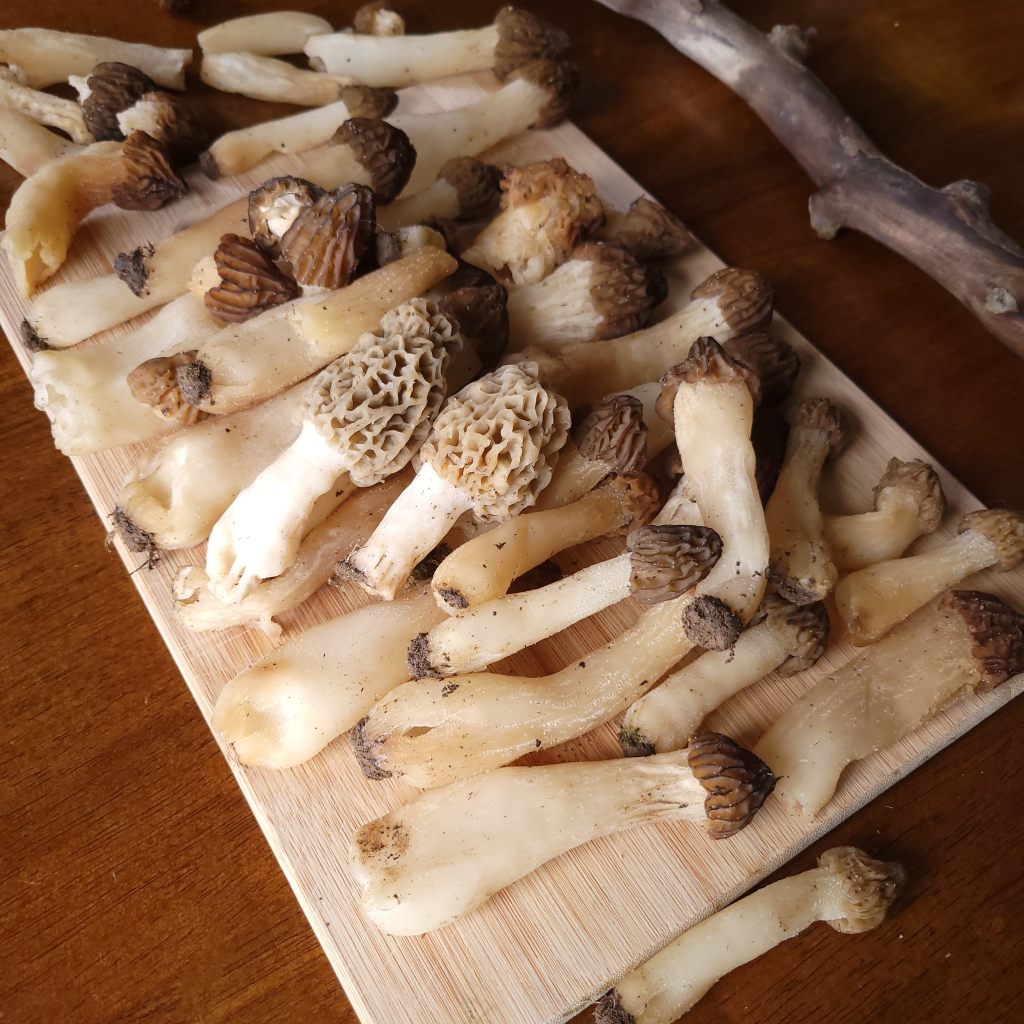I have a confession to make.
I am a terrible morel hunter.
Apparently there’s an actual science to finding these mythical spring creatures; YouTube videos and blogs describe in excruciating detail the clues to look for.
I just walked into the woods in springtime, after some rain, and hoped for the best. Needless to say, I never had any luck until last year, when I found one whole yellow morel (Morchella americana). Well, in point of fact my husband found it. But what’s his is mine, right?
This year we started the hunt earlier, and found TWO morels. Double the harvest of last year – what a haul!
The rainy days continued, so we ventured out again just in case. This time, we were accompanied by one of the teens, who was delighted to find a morel except it didn’t look quite right… like maybe it wasn’t done growing? Or it didn’t have the nutrients it needed and ended up misshapen?
Turns out this was a half-free morel (Morchella punctipes), which I didn’t even know was a “thing” before now!
They are called half-free because the cap is only partially connected to the stalk. There’s, um, a lot of other slang names for the half-free, which I won’t get into here because this is a family-friendly blog! Some resources say the half-free morels aren’t quite as tasty as the yellow ones, but others point out that a morel is a morel – eat up!
There are also “false morels”, which are not edible so proper identification is yet again key. Here is a page with more information about false morels where you can see photos. The only False Morel that pops up on the Maryland Biodiversity Project is the “Gabled False Morel“, but I can’t imagine anyone mistaking that for a true morel!
The patch of half-free morels ended up being a large one. We ended up a bigger harvest than I had ever dreamed!
So now that we had them, what to do with them?
Ice cream, of course! … just kidding.
I used the same treatment as any other mushroom – sautéed in butter. I found at least one website which suggested that morels should only be cooked in oil, because the butter would brown before the morels were fully cooked. I didn’t find this to be the case, however, perhaps because they were still wet from rinsing.
I would love to share a photo of the cooked morels, but we kinda ate them all too quickly. Even the teen tried a bite! Unlike regular store-bought mushrooms that get softer (or mushier, depending on your perspective) the longer they cook, morels shrink up and become more firm as the lose their moisture while cooking.
Also, morels should never be consumed raw because they contain a chemical which can cause digestive upset that breaks down when heated. And as always when consuming a new food for the first time, try a small sample until you know how your body responds!
What wild food are you enjoying this spring, magical or otherwise?




[…] off, because we actually did find morels (Morchella americana & M. punctipes) with quite a bit of help from one of the teenagers. Who […]
[…] With a few notable exceptions (morels, for example), my foraging spring has been utterly full of fail. I would love to blame the erratic […]